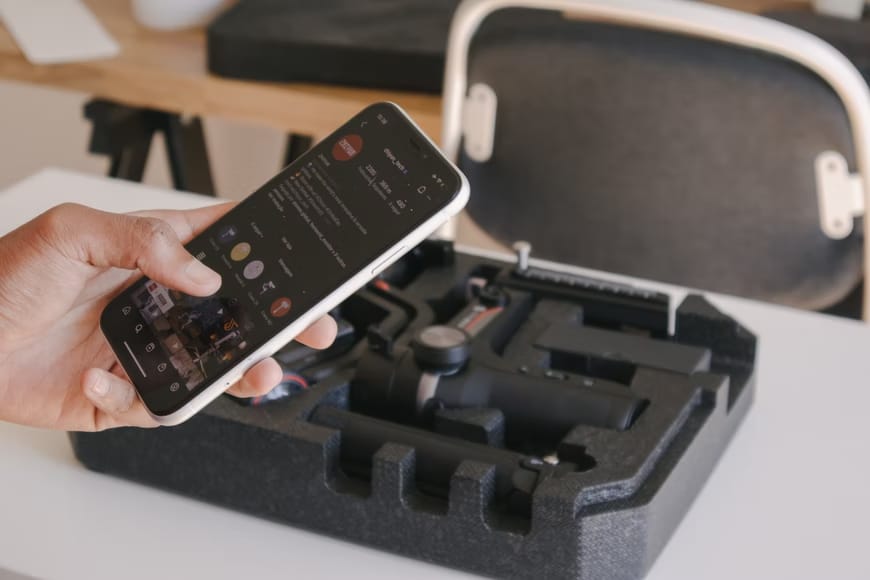How to Get Customers to Give Feedback
There are numerous benefits to getting feedback from your customers. You can learn about the needs of your market, improve products and services based on those needs, and boost loyalty in the process. The only thing that’s holding you back from getting feedback from your customers is knowing how to motivate them to give it to you!
Read this guide to learn the best strategies to prompt customers to give feedback. It’ll teach you simple yet effective ways to motivate your customers so that they’re eager to share their opinions with you.
1. Offer Easy Access to Your Contact Information
Include an email address and a phone number on your website and on your product or service itself. Make sure that all of these contact points are easy to find. Place your business’s contact information at the bottom of each page and create a separate Contact Us page with details. If possible, incorporate them into any advertisements you make for your business.
In addition, consider incorporating social media links that allow customers direct access to you—this will not only help you collect feedback from customers, but it will also help establish a more personal connection with them.
Make sure you add hyperlinks to your contact information. Clicking on a link that directs you is quicker and easier than copying and pasting information. It also reduces human error.
Moreover, you can also set up a telephone line just for receiving feedback, but keep in mind that a toll-free number is required for this.
2. Send Out Surveys Frequently
Surveys are another good way of keeping tabs on customer satisfaction. You can send out surveys via email or even put up a few questions on your website asking how users feel about your product, service, or company. According to HubSpot, collection forms via email have the highest conversion rates at 15%. Be sure to use channels that will generate a high number of responses.
The responses you receive will give you an idea of what customers want and what their concerns are. If you’re looking for more in-depth feedback, consider hiring a professional surveyor to help with your research.
However, keep in mind that most customers are not willing to put in the effort of filling out long surveys. Follow these tips for prompting maximum responses and valuable feedback:
- Add closed-ended questions
- Use simple language; no complex grammar or wordy sentences
- Avoid using fancy fonts or formats to ensure better readability
- Make your survey easily accessible via a link or pop up
- Do not add too many questions; the optimal length is one page/5-6 questions
3. Utilize the Channels That Your Customers Use
The target audience of any product or service is a unique market segment that uses specific communication channels.
For example, if your product/service is targeted toward the 40-60 year age group, you can collect feedback via Facebook effectively. Similarly, if you’re targeting 18-35-year-olds, use Instagram and Twitter to collect feedback.
Using the correct channel is more important than you may think. It saves you a lot of time and resources because using platforms that your target audience doesn’t use can generate inaccurate or unsatisfactory results.
Social media gives you an immediate way of reaching out to customers and finding out what they want. Post some questions on your Facebook/Twitter page and see how quickly that turns into feedback.
Also, don’t forget to reach out directly via email and phone too. These channels are used by every age group. Plus, there may be many customers who are not on social media or don’t use it very frequently that you can reach here.
You never know who is going to respond with some great insights. Be sure to follow up with them after as well. For example, if a regular customer provides negative feedback, make the necessary changes, offer them the product/service again, and ensure that they are satisfied.
This will ensure customer loyalty and make them feel valued.
4. Prompt People with A Review Request Before They Leave Your Site
A great way to improve customer service and gather feedback is to prompt people with a review request when they are about to leave your site. This gives customers a to voice their concerns, provide feedback, and even give a good recommendation!
Plus, the timing is perfect because there is a high chance that they just used your services, for example, made an online purchase on your site.
When your customers believe that you really care about their opinion rather than just selling them products, they’re more likely to take time out of their day and leave a review for you. Thus, how you phrase your feedback request is very important.
Use this example for context, “How was your experience? Let us know so that we can continue to improve and make even better products for you!”
Note that this is directed towards the customer, which gives the impression that providing feedback will benefit them as well. Moreover, the message is personalized rather than generic.
5. Use Customer Satisfaction Scores in Your Advertising Copy
You can use your customer feedback scores in your advertising copy as a way of showing your customers how much you care about their opinions. It’s also another great way of improving conversions. Use it for anything from email campaigns, PPC ads, and more. This is a big benefit for those businesses that have an average review score of 4 stars or higher (3 stars is average).
Here’s an example that you can use for generating your own copy:
“With an average review score of 4.5 out of 5 stars on Google Local, we are rated as one of New York City’s best [insert industry] businesses! Click here to read what our customers are saying…”
Asking customers for testimonials is a must if you’re serious about increasing your word-of-mouth marketing. And don’t just ask for written reviews; photos and videos are even better at getting attention, especially from social media users who might share them with their own followers.
Here’s a mind-blowing statistic for you: posts with images have a 650% higher engagement compared to text-based posts. This number is even higher for videos. If this isn’t enough, here’s another one: 88% of customers trust online reviews, which is why customer testimonials generate 5 times more sales than traditional marketing.
Thus, asking customers for video and photo feedback offers another benefit, you get free marketing content! Be sure to ask for your customers’ consent and then use their content to attract more customers.
Here are a few ways you can ask customers to give you visual content endorsing your brand:
- Send your best product/s to influencers and bloggers; when they post reviews/feedback, their entire following will know about your brand
- Reshare pictures of customers using your product when they tag you
- Small businesses often sell through Facebook and Instagram; you can ask customers to send in pictures and videos of them using the product once they receive it
The good news is that you can ask for feedback in a fun way. Put together a social media contest where customers post their reviews on your Facebook page or tweet their thoughts on Twitter. The winner can get a free product, coupon, or service. This is one of the most effective ways to garner feedback because nothing motivates customers more than free stuff!
Here’s an example: “Your free trial has expired. To continue using our services for free till next month, provide your feedback on [insert platform name]”.
You don’t need to limit feedback to your own blogs. Users often trust reviews on third-party apps such as Reddit and Trustpilot. Getting your customers to write a review on these can be much more beneficial than your own platforms.
8. Use a Feedback Box In-Store or Online
An easy way to get feedback is by using a feedback box. These are commonly used in stores as well as online. The trick is getting customers to stop and think about their experience, which in turn provides you insight into what they like, what they don’t, and how they could be even more delighted next time they visit.
In restaurants, you’re often given a comment card at the end of your meal. Similarly, retail stores can offer comment cards to customers at checkout. For online stores, you can use a pop-up at checkout to redirect customers to your feedback box or simply place it at the bottom of the page.
9. Use Instagram’s Interactive Features: Polls and Quizzes
Polls and quizzes on Instagram are a great way to make customers feel invested in your brand. That’s because they feel like they’re part of something bigger, which in turn prompts them to remain loyal.
For example, rather than asking questions like “Did you get our shipment?”, ask your followers, “What’s something you would like us to ship for you?” Asking for feedback also gives customers a sense of validation since their opinion matters.
Plus, these interactive tools are much more effective than surveys because customers can respond with just a click.
10. Create a Facebook Group
One of the best ways to get customers to give feedback is by creating a Facebook group and posting a question at least once a week. You’ll also want to make sure that your request for feedback is clear and simple, i.e., “What are we doing right?” and “What can we improve on?”
Make sure you don’t just receive comments; encourage group members to ask their own questions, which existing customers can respond to. Even trillion-dollar companies like Apple have a Community FAQ page where customers can interact with one another.
Again, the benefit of this is twofold. Not only do you receive feedback, but new customers can also get answers to any questions without any effort on your part.
11. Create a Google My Business Profile
Having a Google My Business profile for your company can help customers find you online, especially if they’re looking for local services or products.
You can even see how many times your company has been searched for on Google so that you can identify keywords and topics that are important to your customers.
Apart from these features, customers can leave reviews and ratings. An essential thing to keep in mind here is that you do not control these reviews; if a customer leaves a negative review, you will not be able to change or remove it.
This can affect your ranking on Google, so be sure that your service quality is top-notch; otherwise, you could be driving potential customers away rather than attracting them.
12. Use Analytical Tools and Usability Tests
When you’re at an early stage with a product, it’s easy to get tunnel vision and lose sight of what your users want. Focus groups can be invaluable tools for gathering feedback from your users, but they aren’t always going to give you an honest assessment.
One way around these limitations is by using analytical tools like Google Analytics, as well as usability tests. This saves you the tedious task of having to directly ask customers what’s working for them and what is not.
Simply see where your users are finding difficulty navigating your website or which product isn’t doing well this month. The best part is that many of these tools are free and have charts and graphs to help you understand the information easily.
Final Thoughts
Seeking customer feedback is crucial for businesses at all stages, but it’s especially important if you’re new to an industry. You can’t improve on what you don’t know, so any information you can get on what your customers like and dislike is invaluable. Your customers are crucial for growing your business, so utilize their feedback to the fullest.
Sell more, understand your customers’ journey for free!
Sales and Marketing teams spend millions of dollars to bring visitors to your website. But do you track your customer’s journey? Do you know who buys and why?
Around 8% of your website traffic will sign up on your lead forms. What happens to the other 92% of your traffic? Can you identify your visiting accounts? Can you engage and retarget your qualified visitors even if they are not identified?





